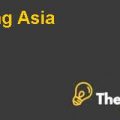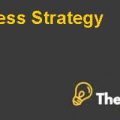Introduction
The Whole Foods Market Inc. is a United States based foods supermarket chain that has beenspecializing itself in the field of organic foods. The company started its operations in the year 1980. The company until now has stores in the United States, United Kingdom and Canada. The company is headquartered in the Austin, Texas.
The procurement office of the Whole Foods is in Jacksonville, California. The CEO of the retail supermarket is John Mackey. The company is a public traded company. The company has been quite successful with its organic food concept.
The initial growth of the company has come through the mergers and acquisitions. Whole Foods started off by purchasing “Whole Food Company” from Peter Roy, who eventually went on to become the first president of Whole Foods. During this period, three of the four founding members of Whole Foods left the company which eventually made Mackey the CEO and the decision maker for the company. In 1992, Whole Foods became a public entity.
The human resource culture at the Whole Foods is such where they are made to work in teams and all the members are called team members. The company has looked to develop a culture where the personal commitment and personal goals are aligned with the overall vision and mission of the organization. The products that are offered by Whole Foods are slightly high priced, but due to the high quality and health conscious element they are perceived as better quality products.
Problem Statement
The case “Whole Foods: The path to 1000 stores” which is one of the largest natural grocery stores in the country United States, in the year 2013 has looked to expand itself rapidly where the goal of the company is to establish itself by growing from 351 stores to a total number of 1,000 stores by the end of the year 2022.
The company has also engaged itself by opening up stores in areas with limited access and limited space also. The company with the concept of 1,000 stores is looking to cater the needs of underdeveloped markets and customers also by reducing prices, etc.
Analysis
SWOT Analysis
Strengths:
The major strength for the company has been the fact that it has been offering organic foods to the customers. The company has been the first company to offer organic foods in the United States. The company even offers products for all the different segments of the industry. The brand name of the company has also been a success factor for the Whole Foods.
The company even offers high quality and fresh food items to the customers. The structure of human resource is also strength for the company where it has no unions in the organization. The diverse range of products offered by the Whole Foods has also been a success factor for the company.The financial stability of the company and the revenues and profits it has been earning can also be considered as strength for the Whole Foods.
Weaknesses:
The major weakness for the company Whole Foods has been the fact that it offers high priced organic foods as compared to other rivals in the industry. Along with this, the growth of organic foods is slower than the traditional foods which make it difficult to offer reasonable prices.
Along with this, the company does not present itself efficiently over the social media. Lack of international or the global presence hasalso been a weakness for Whole Foods. The supply chain and the logistic department of Whole Foods have also been quite unorganized which takes extra time to deliver goods from one place to another.
Whole Foods The Path To 1,000 Stores Case Solution
Opportunities:
The major opportunity for Whole Foods is to expand itself in the Asian and other markets also. As for now, the company does not have global presence, but in future it shall need to focus on new markets and customers simultaneously. Along with this, the company should look to achieve its future goal of opening 1,000 stores by the end of 2022.
Whole Foods can even offer reduced and discounted prices to the areas where the buying patterns are less as compared to the other parts of the market.
Threats:
The major threat for Whole Foods has been the increasing competition. Whole Foods has been facing stiff competition from Kroger, The Fresh Market, etc. Along with this, the customers are moving towards the traditional food items because of the recent global recession makes it difficult for Whole Foods to sustain tin the market with its current strategy....................
This is just a sample partial case solution. Please place the order on the website to order your own originally done case solution.













